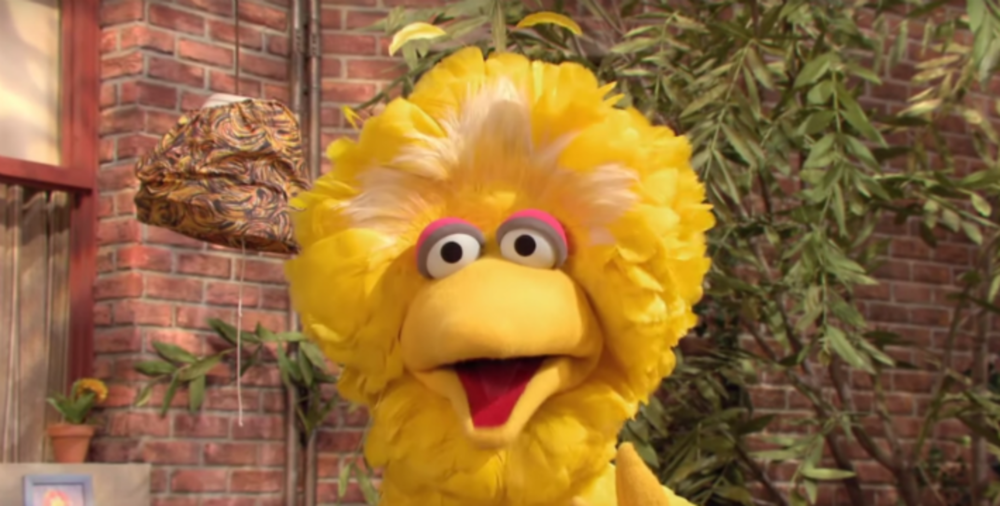The first time I saw Caroll Spinney was when I was a baby. Like many children, my brother and I grew up watching Sesame Street and developed a fondness for Big Bird and Oscar the Grouch—the two characters for whom Spinney provides the voices and puppetry.
As time passed, I stopped tuning in to learn the letter of the day. But when I saw Spinney at a screening of the documentary I Am Big Bird: The Caroll Spinney Story, I was reminded of my affinity for the characters. I guess you’re never too old to love that eight-foot-tall yellow bird. Spinney is living proof of this. Although Spinney plays a six-year-old bird on TV, he’s 81 years old and has been donning the bird suit for 46 years.
So when I saw that Spinney would be speaking at Advertising Week in New York, I knew that I had to attend his session. Spinney sat down with DigitasLBi’s Chief Content Officer Scott Donaton and discussed the secrets of successful storytelling, as well as what it takes to create beloved characters today. Here are six tips I learned from the self-described “oldest child star.”
1. Be human. This tip might seem strange coming from a man who’s spent most of his adult life dressing up like a giant yellow bird. However, Spinney said that Big Bird portrays a lot of different, relatable emotions.
“He gets to be almost more human than the humans on the show because he’s able to express a lot of emotion,” he said.
For instance, in one episode Big Bird explores the topics of death and grieving after learning that Mr. Hooper—Sesame Street’s local shop owner—passed away. He conveys the same confusion any child may feel when he learns that someone he loves isn’t coming back and then expresses sorrow.
So what can marketers learn from Big Bird’s sentimental side? Don’t be afraid to express vulnerability in campaigns. Tapping into real emotions can be an effective way to educate an audience or prove that your brand empathizes with their pain points or needs.
2. Embrace humor. Not all of Big Bird’s most memorable moments are sad ones. On the contrary, Spinney said humor plays a vital role in Sesame Street’s success.
“They realized that it was important to be just as funny as it was educational,” he said. “It kept people hooked.”
Indeed, humor helps Sesame Street introduce children to sensitive topics, like bullying, and educate them on these subjects.
Marketers should follow Sesame Street’s lead and be open to leveraging humor to educate, entertain, and engage consumers.
3. Know that inspiration comes from everywhere. Some of the best ideas come from life’s simplest moments—like how Spinney found Oscar the Grouch’s voice after a cab driver asked him “Where to, Mac?”
Take note of your everyday paint points, routines, and needs—your consumers will likely share them, too.
4. Be prepared to evolve. As a show that’s been on for nearly half of a century, Sesame Street has seen a wave of social and political change. And according to Spinney, the cast has always adjusted its characters to reflect what’s relevant at the time.
“By being an experiment in television, we can adjust ourselves to what it is now,” he said.
Consumers are also constantly evolving. Marketers need to adopt Sesame Street’s test-and-learn approach and adjust their marketing to reflect consumers’ most current state—whether that involves acknowledging a change in preferences or sending different targeted messages based on where consumers are in the purchase funnel.
5. Leverage consumers’ attention wisely. Few brands can captivate an audience the way Sesame Street can. So when marketers do have consumers’ attention, they need to make the most of that time.
For instance, instead of filling a 20-second spot with a brand’s name and slogan, Spinney said, marketers can use that time to tell a story.
“Quite a lot can be said in that period,” he said.
6. Understand that digital isn’t always best. Sesame Street has evolved quite a bit since its 1969 debut. The brand now has apps, offers online videos, and Big Bird even tweets.
Tweet?
— Big Bird (@BigBird) February 13, 2015
One of the most recent digital developments is Sesame Street’s agreement to run new episodes on the cable network and streaming service HBO before airing them on PBS. Spinney acknowledged that this move will help the show increase its yearly new episode count.
But Sesame Street hasn’t gone completely digital. In fact, Spinney said that he still moves Big Bird manually inside of the feathered suit. When asked why he hasn’t tried maneuvering Big Bird digitally, Spinney said that manual puppetry allows the characters to react more instantaneously to other cast members and what’s around them.
In today’s world, marketers are constantly turning to digital to target customers and serve them in real time. However, as Spinney showed, sometimes going with the more traditional method is best. Therefore, marketers must make sure that they’re not completely ignoring their non-digital channels, like in-store or the call centers. After all, nothing beats a good, old-fashioned customer experience or helpful person-to-person communication.








